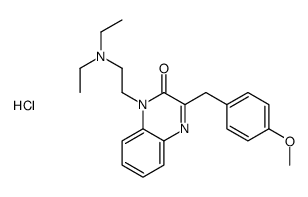Caroverine inhibits the conditioned place aversion induced by naloxone-precipitated morphine withdrawal in rats.
U Kratzer, W J Schmidt
Index: Neurosci. Lett. 349(2) , 91-4, (2003)
Full Text: HTML
Abstract
Comparable to the anti-craving compound acamprosate, caroverine reduces alcohol withdrawal symptoms by an antagonism at ionotropic glutamate receptors and a blockade of calcium channels. The present study examines the effect of caroverine in a craving model, in which acamprosate has proved effective before. A place aversion was induced by a conditioned morphine withdrawal by administration of the opioid antagonist naloxone (0.1 mg/kg, s.c.) 5-6 days after the subcutaneous implantation of a morphine pellet in rats. Testing in the drug-free state, the acquisition of a conditioned aversion against the naloxone-associated cues was inhibited by pretreatment with caroverine (5 mg/kg, i.p.). This result corroborates the involvement of excitatory glutamate and calcium in the development of conditioned withdrawal and craving. It offers further evidence for the hypothesis that these neuronal systems are altered during withdrawal in a similar way by ethanol and opiates.
Related Compounds
| Structure | Name/CAS No. | Molecular Formula | Articles |
|---|---|---|---|
 |
Caroverine HCl
CAS:55750-05-5 |
C22H28ClN3O2 |
|
Possible contribution of pannexin channel to ATP-induced cur...
2011-06-07 [Brain Res. 1394 , 71-8, (2011)] |
|
[Drug therapy for disturbances of smelling].
2004-02-01 [Laryngorhinootologie. 83(2) , 124-34, (2004)] |
|
[Therapy of olfactory loss].
2003-08-01 [Laryngorhinootologie. 82(8) , 552-4, (2003)] |
|
Caroverine, a multifunctional drug with antioxidant function...
2003-01-01 [Biofactors 19(1-2) , 79-85, (2003)] |
|
Caroverine in tinnitus treatment.
1998-07-01 [Acta Otolaryngol. 118(4) , 606-8, (1998)] |